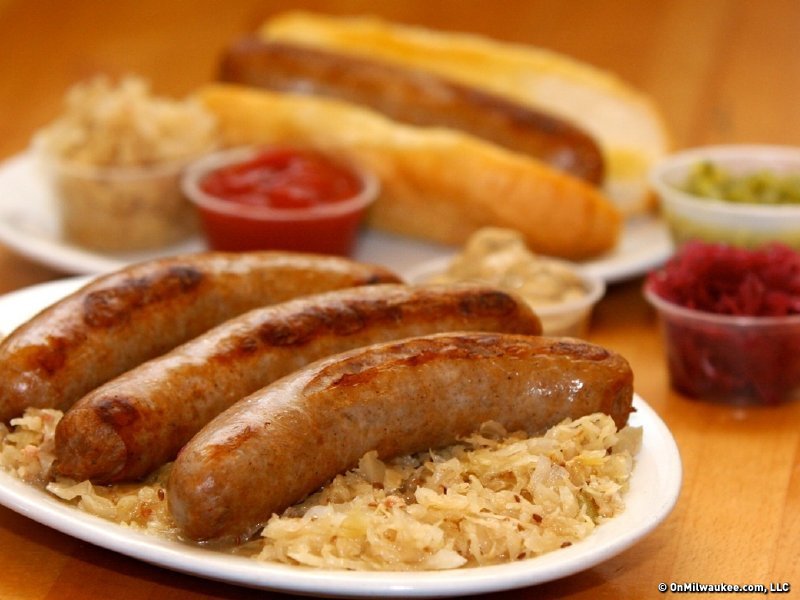How much do you know about the strange, yet delicately flavored, morel mushroom?
If you’re anything like me, you love the delicious fungi, and yet you may know very little about the mushrooms themselves.
Fortunately, there is expertise right in our own backyard. Britt Bunyard, editor in chief of "Fungi," the most widely circulating mycological publication in North America, just happens to be a resident of Wisconsin. And he offered to guide me through a quick lesson about these rare spring mushrooms and their allure.
"Morels are very meaty tasting and textured ... plus kind of a husky earthy smell in your mouth ... husky like the forest floor they come from," Bunyard said as he described their flavor.
"They do excellent – fresh or dried and rehydrated – in cream sauces, soups, and a whole host of dishes. They really bump up the ‘umami’ quotient of whatever dish they’re in. The best way, though, may to be to simply pan fry them in butter or to deep fry. My kids really like them fried, especially if tempura battered and then deep fried."
Also known as dry land fish, molly moochers, hickory chicks, and pine cone mushrooms, morels are actually quite prevalent.
"Morels occur just about everywhere," Bunyard says, "Nearly all continents have morel species, including North and South America, Europe, Asia ... even deserts. There are quite a few … 30, 40, 50 species."
But, despite their widespread existence, they are fragile, highly perishable and resist cultivation, so they often command a high price. They can also be elusive.
"Part of their allure is that they’re difficult to find," Bunyard admits. "Even experts can get skunked and come home empty-handed."
Fortunately, Wisconsin is a fairly good state to live in if you’re a morel lover.
"Our climate is cooler in the spring and with ample moisture," Bunyard explains. "In the Southern states, morel season can be very short as it gets very hot and dry early, ending the season. In Wisconsin, the cool wet conducive weather usually persists for a long period, allowing for a longer season—around one month or so."
According to Bunyard, a good season general requires plentiful rainfall, plus temperatures in the 60-70 degree range during the day and mild evening temperatures.
"This year the cold has persisted too long, delaying onset of our season. The experts say that soil temps must be around 50-55 F before they will emerge. Our winter lasted very long, then the warm periods have been dry. I think we’ll still have a great season, albeit a late one, as long as it heats up some, and as long as the frequent rains continue. Like all morellers, I’m keeping my fingers crossed. "
Foraging for wild mushrooms generally carries with it the skull-and-crossbones disclaimer of poison. But, amateur foragers can feel fairly safe hunting for morels, as they are included among what mycologists call the "foolproof four," a list that includes morels, puffballs, sulfur shelf mushrooms, and shaggy manes. Each of these mushrooms has a distinctive look that’s easily differentiated from other, poisonous varieties.
The only peril in morel hunting is something called a false morel, which is poisonous if eaten raw but quite rare in these parts and fairly distinctive in appearance. Bunyard says even these are little cause for alarm.
"While there are a couple of mushrooms called false morels, even those are very. . . easy to tell apart from true morels," he says.
When searching for morels in the woods, Bunyard recommends looking along the edge of the forest, in lower areas, but not those that are flat or flooded. Young woodland areas that contain elm, ash, cherry and sycamore trees are commonly good grounds for morel hunting.
Mushroom hunters look for the following indicators that the morel season has begun: blooming trillium flowers, mature ramps, budding May apples and redbuds, and oak trees with leaves the size of "mouse ears."
If you are lucky enough to find a patch of morels, you’ll want to take care in harvesting. Carefully, cut or pinch off the morel, leaving the stem intact. This way, the root stays in the ground and will produce again. If you pull up the stem and roots, you’ve just cut into future harvests.
When you get your morels home, you’ll want to clean your mushrooms well. Since they grow on the forest floor, and have plenty of cracks and crevices, they tend to serve as hiding places for small bugs or worms. The easiest way to clean the mushrooms is to soak them for a few hours, or overnight, in salt water. Discard the water and any critters after soaking.
Of course, lovers of mushrooms who would prefer others to do the gathering and cooking for them can find the delicate fungi in play at a number of the area’s restaurant kitchens.
Dave Swanson of Braise works with three foragers from different areas throughout the state. He is already planning his spring morel menu, which includes morel and eggs "en cocotte" with Oliver's Reserve Cheese, a morel, ramp and asparagus panzanella salad with spring onion vinaigrette, and morel ragout crostini with quark and ramp jam.
At Sanford, Justin Aprahamian loves to pair the sweet woodsy flavor of morels with pasta.
"I really love making ravioli and pairing the butter with them," he says. "Another dish that stands out to me is something Sandy always did. He was always great at showcasing that things that are in season go well together. He would pair fiddleheads, ramps and morels with veal stock and garlic. All in the same place. It was awesome. "
Dan Jacobs at Wolf Peach is also looking forward to using the mushrooms with pasta. His plan for a spring menu offering includes house-made cavatelli, ramps, sunchokes and chicken sausage.
Jacobs loves morels for a number of reasons, but the advent of summer weather is at the top of his list.
"They let me know that winter is over and soon I can wear shorts again," he says.
As a passionate champion of the local dining scene, Lori has reimagined the restaurant critic's role into that of a trusted dining concierge, guiding food lovers to delightful culinary discoveries and memorable experiences.
Lori is an avid cook whose accrual of condiments and spices is rivaled only by her cookbook collection. Her passion for the culinary industry was birthed while balancing A&W root beer mugs as a teenage carhop, fed by insatiable curiosity and fueled by the people whose stories entwine with every dish. Lori is the author of two books: the "Wisconsin Field to Fork" cookbook and "Milwaukee Food". Her work has garnered journalism awards from entities including the Milwaukee Press Club. In 2024, Lori was honored with a "Top 20 Women in Hospitality to Watch" award by the Wisconsin Restaurant Association.
When she’s not eating, photographing food, writing or planning for TV and radio spots, you’ll find Lori seeking out adventures with her husband Paul, traveling, cooking, reading, learning, snuggling with her cats and looking for ways to make a difference.







